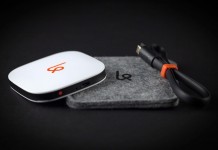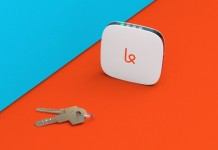 How spoiled we e-book readers have become! It was only with the advent of the Kindle that delivery of e-books over 3G wireless became a possibility—and now many users find it is something they just can’t live without.
How spoiled we e-book readers have become! It was only with the advent of the Kindle that delivery of e-books over 3G wireless became a possibility—and now many users find it is something they just can’t live without.
On a TeleRead post about a $150 e-book device earlier today, commenter Devini said, “Without the 3G it’s not worth it,” and Andrea told the story of being at an orchestra rehearsal with her Kindle and finding her ten-year-old son had forgotten to bring a book to pass the time.
In a minute or so, we found a book for him and downloaded it! Problem solved!! That’s the power of 3G!! And you don’t even have to buy a book…you can use the “Magic Catalog” of Project Gutenberg (I think this is available from a link from the Kindle World blog).
So the Kindle, Nook, and soon some models of the iPad will have that 3G connection built in. A number of devices, even if they do not support 3G, do support wifi wireless (including the non-3G-capable models of the iPad), but they have been considered less useful since there is no guarantee you will be at a location that has wifi access.
However, here are a couple of ways to get the benefit of connectivity anywhere with only a wifi-capable device.
Verizon’s MiFi
Even though the iPad’s 3G service will be provided by AT&T, one of the real winners when the iPad comes out will be Verizon. And don’t think they don’t know it.
Verizon offers a pocket-sized device called the MiFi (made by Novatel) that is a battery-powered wireless router with a connection to Verizon’s 3G network. It can be used by up to five Wi-Fi devices at a time for up to five hours on battery power (or plugged in for more), and bandwidth caps are 250 megabytes per month ($39.99/mo + 10 cents per megabyte overage) or 5 gigabytes per month ($59.99/mo + 5 cents per megabyte overage).
The thinking goes, why pay $130 extra plus a monthly fee for a 3G wireless connection you can only use with your iPad, when you could buy a pocket-sized router that would let you use the iPad as well as four other gadgets for a (admittedly higher) monthly fee?
And its usefulness is not simply limited to the iPad. A number of third-party e-book readers and Internet tablets are starting to come with wifi connections but no 3G. A MiFi in the pocket would give them the same download-anywhere connectivity as a Kindle or Nook (though, granted, you don’t have to pay for their 3G service).
While even the 5 gig plan would be limiting enough you would not want to download much multimedia, e-books are small enough that you could certainly download more than you could read—and when you weren’t reading, you could take your laptop or iPod Touch on the road.
And the wireless connection is not the only benefit these MiFi devices offer. Recently, Novatel announced a new cloud storage service for MiFi owners, as well as the ability to stream music and movies from an SD card slot built into the MiFi to any wireless device attached to it.
At the moment, Amazon is offering the $300 MiFi 2200 for one penny when purchased with a 2-year service contract. Presumably similar deals can be found elsewhere as well.
Clearwire: Clearly Better?
But if you are in the metropolitan centers that “4G” WiMax provider Clearwire serves, you may have another, more reasonable alternative. Clearwire provides DSL-equivalent speeds (2.0 MBPS down, 256 KBPS up) over wide areas—like cell data services, but more affordable—and without, the sort of monthly bandwidth caps and surcharges cell phone companies have. Said Clearwire’s chief strategy officer Scott Richardson in a press release:
Since CLEAR is a true broadband Internet service, which just happens to be delivered wirelessly, we actually welcome the use of heavy bandwidth data applications that conventional 3G network operators may discourage or simply can’t support. In fact, we encourage our customers to use their Wi-Fi-enabled smart phones, or other CE devices, on our open network to receive better Internet connections.
Clearwire offers an 8-connection, battery-powered pocket wifi hotspot called the CLEAR Spot. Users insert a $49 USB modem into the device, and they can then take their wifi hotspot with them wherever they go. This is an even better deal than a Verizon MiFi, especially since Clearwire can replace a consumer’s regular DSL or cable service rather than adding additional charges.
The drawback is, of course, that at present Clearwire is only available in selected metropolitan areas such as Seattle, Portland, Austin, Dallas/Fort Worth, Chicago, and others—and if you are not within one of those areas, you do not have wireless service. (Though if you travel from one service area to another, you can continue using your service in the new area with no additional charges.)
Either of these devices provides a new way of thinking about your wifi-enabled gadgets. Where using them was formerly a matter of scanning for wifi networks wherever you go and remembering where likely ones can be found, with a MiFi or CLEAR Spot you could simply suit the location to you rather than to the availability of networks. I wonder what that would be like?
































